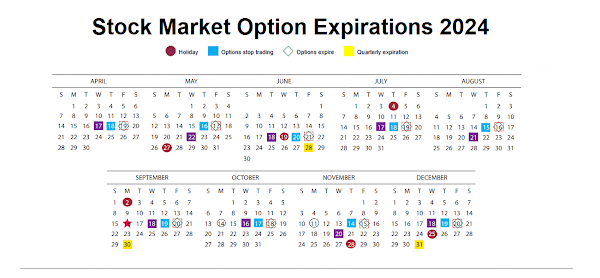This is a reprise of a post from 26 June 2014, almost ten years ago.
Slowly, slowly, then all at once. This is how the big, long cons unwind.
China Finds $15 Billion of Loans Backed by Fake Gold TradesBy Bloomberg NewsJun 26, 2014
China’s chief auditor discovered 94.4 billion yuan ($15.2 billion) of loans backed by falsified gold transactions, adding to signs of possible fraud in commodities financing deals.
Twenty-five bullion processors in China, the biggest producer and consumer of gold, made a combined profit of more than 900 million yuan from the loans, according to a report on the National Audit Office’s website.
Public security authorities are also probing alleged fraud at Qingdao Port, where copper and aluminum stockpiles may have been pledged multiple times as collateral for loans. Steps by the Chinese government to rein in credit by raising borrowing costs in recent years created a surge in commodities financing deals that Goldman Sachs Group Inc. estimates to be worth as much as $160 billion...
Q: If something is collateralised more than it exists, how does it become excess versus in short supply?
A: It's bearish because it's convenient to certain parties who see an opportunity in it? lol
In all seriousness, I do think one can get a temporary move in the paper price of a commodity like gold or anything else, because in their fear investors start dumping and unwinding their paper positions based on some question of fraud.
The question an objective inquiry must frame is, 'Was the demand itself false, or the means of supplying the demand a false alternative? ' In other words, what is the essence of the demand, and what are the incidentals, or accidents.
In a situation where a fraud is exposed, you can get an excess of 'supply' of gold related instruments from those who wish to sell, against a deficit in 'demand' for that class of instruments because people doubt the veracity of the instruments themselves. You get a temporary break in demand from a disruption in market transactions.
How do their liabilities match up against proven assets? In a case like this any affect on the price of the assets is generally a very short term phenomenon, not unlike the withdrawal of the tide in advance of a tsunami.
Perhaps an analogy would be if the integrity of some instruments such as GLD or SLV was brought into question. What if it was determined that due to counterparty claims and sloppy accounting the net asset value of GLD was called into question? GLD would fall into a deficit against gold of course. It would have an excess of liabilities over assets, and the market would adjust that.
There may even be an overadjustment, and ironically GLD might liquidate some of its real assets that had been in short supply. And in the very short term a break in the demand for GLD might trigger a share liquidation that could also depress the price of the underlying commodity, at least temporarily, depending on how large a market force that GLD had been on marginal demand.
Remember that current price can be set very much at the margins in the short term, depending on how inefficient a market may be and the shelf life of the commodity. This is often forgotten when people consider the nominal size of a market, and use that as a reason that it cannot be manipulated because of that sheer size. What they often conveniently forget is that price is set at the margins, and it is the marginal size of the transactional market that is important, involving other factors like seasonality, shelf life, and the efficiency of perception of the future.
Was gold moving higher in price because people wanted to own GLD in and of itself, or were people buying GLD because they wanted exposure to physical gold, and GLD happened to be one vehicle of choice? In other words, what was the essential driver of demand? We ought not to expect the market to answer that question efficiently in the very short term during a sudden exposure, when the first impulse is to liquidate back to some form of certainty.
Now that does help to enlighten this in some ways. Why are these Chinese instruments not just falling into a deficit against physical gold, but apparently driving the price of gold itself? Firstly, I question the premise stated by the mainstream media itself, since their analysis of the underlying factors of markets in the daily headlines is notoriously driven by biases. But let us assume that this is correct and that this is affecting the gold price more than, let's say, the headlines in Bloomberg and the Financial Times.
Since these Chinese paper contracts are in a great deficit in assets, they might not have been a major source of actual intended physical demand, but rather an alternative manner of referencing that asset class. They certainly are larger than the frauds involving commodity assets at MF Global, for example. Let's just say they are not inconsequential.
The Chinese were not tying contracts to gold because they wanted the contracts that happened to involve the delivery of gold. They involved gold in the contracts because the gold was something that they trusted, above and beyond the contracts. In other words, they were a kind of risk abatement. Gold was an 'external' good, without contingency to the contracts. Rather, the contracts were contingent upon gold. And when that contingency was exposed to unexpected risk, an unwind was triggered in a form of sudden market revulsion to the contracts, with some measure of collateral damage (pun intended).
The price of gold as it is now determined largely in the West is divorced, almost shockingly at times, from the fundamentals of supply and demand in the real world. One only has to look at the leverage at the Comex and the LBMA to get a sense of it. In the case of gold this is also driven by the willingness of large holders of gold, including central banks and some funds, to lease their assets into the market and incur counterparty risk at market distorting prices.
By the way, I now believe that the big short squeeze in the metals last week was tied to word of the unfolding collateral scandal in China. You had best believe that market participants are watching this closely. There was a significant amount of nervous short covering.
As we have seen in the past, during periods of change in the global currency regimes, there may develop two markets: an official paper market that prints the headline price, and a private market that prices physical bullion in bulk trades with a transfer of real goods occurring with negotiation. Only the retail individual is tagged with the official rates. I had great first hand experience with this during the fall of the Soviet Union, especially in Prague and Moscow.
Interestingly enough in the case of silver the central banks are not large holders of stores of that physical metal, so any faux supply must derive, as some suspect, from mass naked shorting by market makers and speculators. This may provide some extra force to the eventual price adjustment, even in this age of wristslap fines for egregious fraud.
I would hazard a guess that to the extent that these fraudulently leveraged instruments did not involve the delivery of real bullion on demand, that they may set up a temporary distortion in the market, even to the downside, that will set up a major rally in price once the fog in the market clears, and traders and investors understand what they are really holding. This could hold true for these Chinese contracts, and even contracts at a major Western exchange. Liabilities, once they settle in the unwind, will be resolved with the underlying assets. The honesty in the market will determine the manner and speed of the settlement.
This is a scenario that seems to be occurring to some small extent in gold now, and is set up to occur in silver. The actual moves will occur when transparency is brought to the market, generally through some 'trigger event' that in itself may not be of a consequential magnitude, like a parting of clouds 'brings the dawn.' The sun was always there, but the clouds of mist disguised it.
The divergence between paper and physical markets also has highly corrosive longer term affects. The manipulation of prices can often cause systemic underinvestment in the production of supply. Once that manipulation is exposed, and the true state of supply and demand without the mask of leverage is realized, prices will adjust accordingly, and sometimes with a significant force.
The adjustments may be of such a magnitude that the governments and exchanges will force settlements with other assets like cash, where they may. As the bad money drives out the good, any such moves will further propel investors into safe havens, and could be a period of much uncertainty.
There are certainly other ways of answering and interpreting this. I will offer no criticisms since there is room for differences. But in general when those answers are accompanied by ad hominem attacks and insults, obscure reasonings and resort to technical jargon, they are often falsely biased by either ignorance or intent. I have read some rather tortured explanations for things from some surprisingly well placed sources, and some with seemingly impressive connections to the industry and credentials which they wear proudly, as a support for their puzzling opinions that seem to violate common sense and the facts at hand. Such are the times.



















































